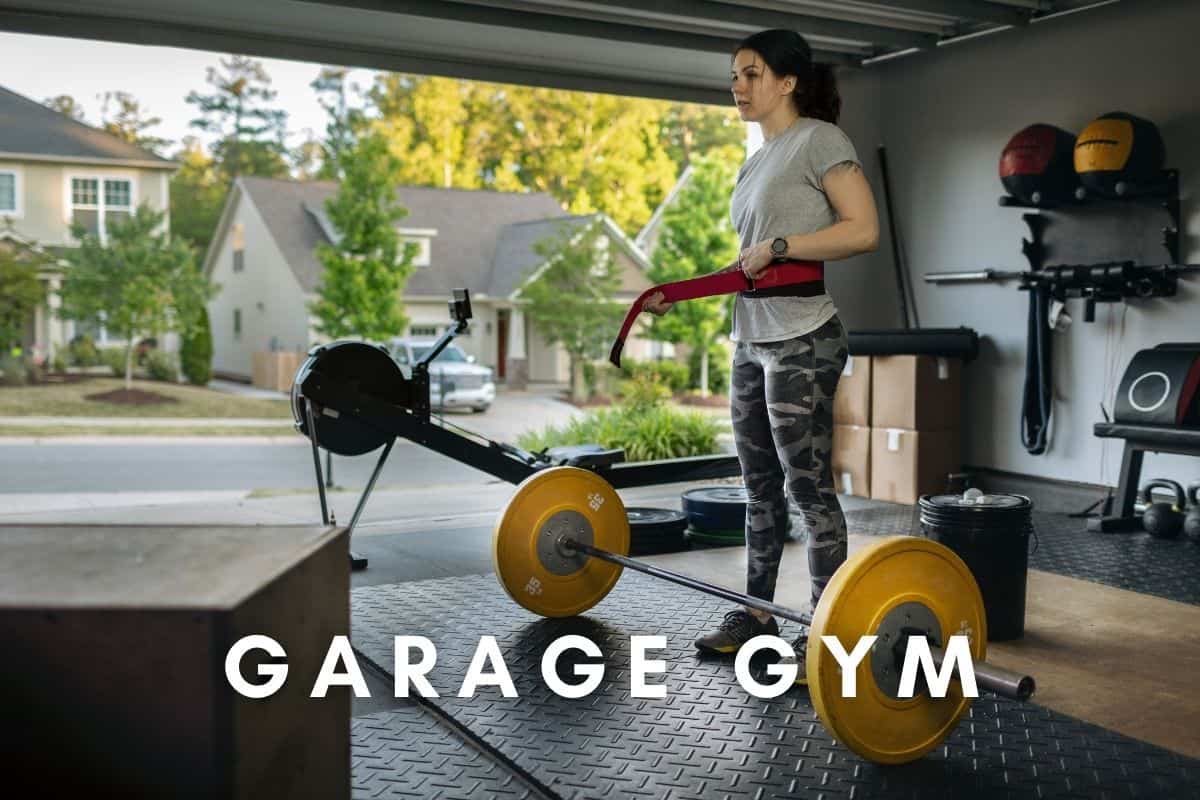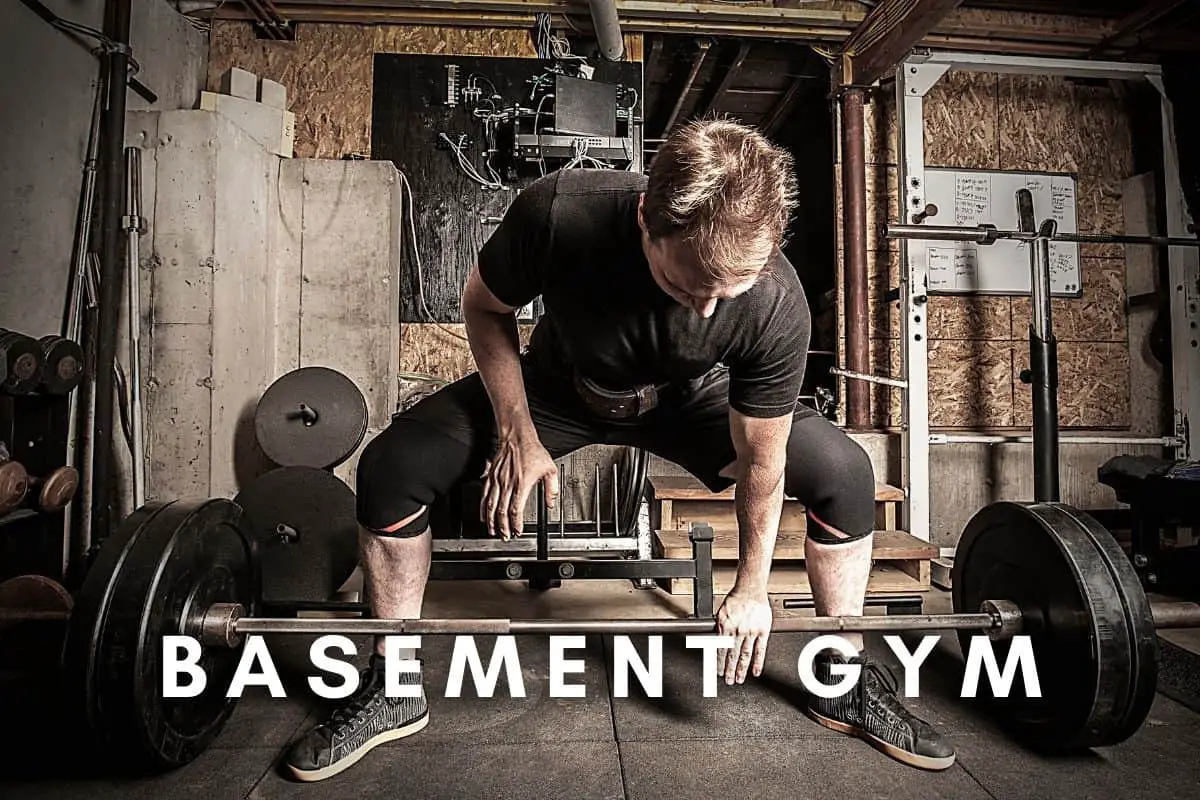What’s the better place to build a home gym? The garage or the basement. While every house is different, there are some general characteristics of both the basement and the garage that make one more suitable.
The garage is generally a better option for a home gym since the ceiling is higher, access is easier, there’s more natural light and ventilation is better. It does require you to give up the indoor parking space. A basement can be turned into a great home gym but requires more work.
There is more to it than the quick summary above. Keep reading to find out a few more pros and cons of both rooms like temperature and noise.
Contents
Differences between the garage and basement
To decide which space is better is ultimately your choice. It depends on your house and situation. In your house and situation, one might be better than another.
There are some general observations we can make in general differences between a basement and garage and what makes one of those better to build a home gym in. Let’s find out what the differences are.
Pros and cons of building a home gym in the Garage
A garage is likely one of the first spaces you consider when planning a home gym. And for good reason, there are plenty of good things about building a home gym in your garage although there are a few drawbacks as well.

Pros
- It’s very easy to get equipment in and out. There’s a big door that opens to the driveway. You can get your equipment delivered from the truck straight into your gym. No small doors or stairs to deal with.
- A big door you can open. Nice weather outside? Just open the door and you’re almost working out outside. You could even move some smaller equipment outside and actually work out outside.
- Usually more natural light than in the basement. That does depend heavily on the specific house though.
- Strong concrete floor. Like the basement, the floor of a garage is strong and built to handle a lot of weight. It’s still recommended to use gym flooring but you won’t have to worry about putting heavy weights on this floor.
By the way, you can put your treadmill in your garage but there are a few things you should be aware of, click here to find them.
Cons
- It’s difficult to build a home gym and park your car at the same time. Although it’s not impossible. Check this post on how you could do it. You’ll have to make some compromises, however.
- Usually not well insulated so the temperatures are more extreme than in the basement. If it’s hot that’s easily offset by opening the door but if it’s cold, well, you’ll have to work harder.
- Some garages don’t have a completely level floor for drainage. This means your weights might roll away. When put down. This is a small thing but can get irritating.
Getting the right flooring is the key to combining cars and gyms, learn more here.
Pros and cons of building a home gym in the Basement
Now let’s look at the basement. What are the pros and cons of building your home gym there? Obviously, it’s in a different location in the house but what are the other differences?

Pros
- Stable temperature. The temperature in a basement doesn’t change as quickly as in the rest of the house. It depends on your climate if that’s a great thing but for most people that’s a pro. In the winter it’ll be a bit warmer than outside while in the summer it’ll be a bit cooler. I personally prefer colder temperatures in my gym over hotter ones. So as long as my hands don’t freeze to the barbell, I’m good.
- Noise. The basement is underground. That means noise doesn’t get out easily. You can still have some noise problems if you drop really heavy weights though. Read more about gym noise insulation here.
- Strong concrete slab. Heavy weightlifting requires a strong floor. Most basements have a concrete slab as a floor. That means it can take a lot of weight and abuse. Gym flooring is still advisable but that’s more to protect your equipment than your floor although you could still damage it.
- The basement is usually not used optimally anyway. Basements might be a storage place for assorted **** you collect over the years. It’s not a highly trafficked area of your house. That means you could move your stuff somewhere else and create a gym there without causing much of a problem.
By the way: You can put a treadmill in your basement but there are a few drawbacks to be aware of. Find them here.
Cons
- It’s difficult to get equipment in and out of the basement. Some basements have a side door which makes things easier but if you’ve got to carry big pieces of equipment down the narrow stairs, it is difficult.
- Ventilation. Since basements are underground, the normal ventilation isn’t great. You’ll have to think about how to improve it since working out in a badly ventilated basement isn’t comfortable or healthy. Read more about improving your home gym’s air quality here.
- Basements are often damp and can have water intrusion. This is not good for the atmosphere and can cause your equipment to rust. Of course, a big part of this can be remedied by improving ventilation.
- Low ceilings. Basements often have lower ceiling heights than the rest of the house. Low ceilings aren’t impossible to work around but do complicate things. Read this post to find out more about how high your ceiling should be.
- No natural light. You’ll always have to turn on some kind of artificial lighting.
Read here how to go from an unfinished basement to a home gym.
Garage vs. basement home gym
So now we have all the pros and cons, let’s see what the better option is. Both options are workable if it’s the only thing you have available.
| Basement | Garage | |
|---|---|---|
| Accessibility | V | |
| Ventilation | V | |
| Natural light | V | |
| Strong Floor | V | V |
| Stable temperature | V | |
| Noise | V | |
| Air quality | V |
In general, a garage gym is going to be much easier to set up and more comfortable to use. Gym equipment is heavy and large. That means it’s much easier to get into a garage than a basement. Garages have much better ventilation and if it doesn’t, just cracking the door a little will fix it.
On the other hand, a garage will have bigger temperature swings than a basement. If you live in a climate with extreme temperatures, the basement will have a more stable temperature. If you hook up the basement to the HVAC system, it’s possible to keep it at the same temperature year-round which is much more difficult in a garage.
Sure, these are all things that can be overcome (except natural light). And the basement can be turned into a great place for working out. That does take more time, money, and effort than the garage though.
That’s why the garage is generally the better option.
You don’t even necessarily give up your parking spot if you plan carefully and have a medium-sized car. Read more here.
Alternative Home Gym Spaces
There are a few other spaces that can be used to build your home gym in. What about those options? Are they any good or can you just disregard them altogether? Let’s take a look.
Bedroom
The most common alternative space is a spare bedroom. It isn’t a bad option at all. It’ll have the same temperature as the rest of the house, good ventilation, and natural light. The biggest drawback is that bedrooms usually aren’t on the ground floor. This means two things: You’ll have to worry about how much weight you put on it. Second floor bedrooms aren’t really built to handle a ton of weight.
The other drawback is that there will be much more noise transmission to the rest of the house compared to the basement or garage. If that’s a problem for you depends on your situation of course.
Backyard
Ran out of space in your house and don’t want to let your kids sleep outside? How about building a gym in your backyard? If that’s a good idea really depends on where you live. This is only really an option in Southern California and similar climates. Too hot and too cold are not the nicest conditions to work out in.
Of course, working out in the open air is pretty awesome and much better than any indoor gym. But weather is going to be a big factor in your decision to work out or not. That could disturb your workout continuity.
Another concern is the safety of the equipment. First off, outdoor conditions will wear the equipment much faster than indoor conditions. Most gym equipment is designed to be used indoors so it’ll fade and rust pretty quickly outside. Thieves might be another concern.
So, there are quite a few drawbacks to having an outdoor gym but if you live in a safe neighborhood with a great climate, go for it!
Shed
Ok, so an outdoor gym isn’t really feasible for most people but the house is still full. What can you do? How about building a shed in the garden that houses your home gym? You’re using the same space as you would for a garden gym but it’s not occupied by anything so your gym will be welcome.
Your equipment is safer and will last longer. You don’t take up any space in your home and you can build it to suit your needs.
Want a gym shed? Read here what to think about.
Many people often forget a few important pieces of their home gym that isn’t directly gym equipment. Here are my favorite home gym tools.
- Interval timer: To time your intervals and all types of other workouts, the GymNext Flex is easily the best and easiest to use.
- Mirrors: Fab & Glass (Amazon link) makes the best large mirror sheets so you can see your exercise form.
- Flooring: American Floor Mats gym flooring (Amazon) or equipment mats make your gym quieter, easier to clean and keeps your floor and equipment safe.
- Fan: The Rowenta VU5670 (Amazon) is a great way to stay cool while working out.

